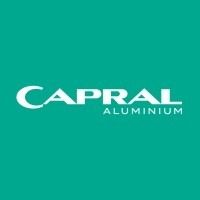-
Australia
Copyright © 2025 Powered by BCI Media Group Pty Ltd
Confirm Submission
Are you sure want to adding all Products to your Library?
Contact Detail

As global demand for aluminium continues to increase, more and more businesses and consumers are considering the use of recycled aluminium content in their products. While most of the aluminium products Capral produces are manufactured using raw virgin aluminium material, recycled aluminium content is becoming more prevalent in the billet we use to extrude aluminium products locally.
Recycled aluminium can be used to make a wide variety of products, from car parts to food containers. The manufacturing process for this kind of aluminium involves melting post-production or post-consumer scrap metal to produce a new material with similar properties.
As one of the most recycled materials in the world, read on to learn more about how aluminium is recycled, its environmental impact and the type of products Capral produces using recycled aluminium.
What Is Recycled Aluminium?
Aluminium is a ubiquitous metal used in the production of various products and is one of the most recycled materials in the world. An estimated 70% of the aluminium ever produced has been recycled at one stage in its lifetime.
Old or scrap aluminium is melted in a furnace and cast into the desired shape. This process is known as remelting and is used to create various products. Aluminium is more easily recycled than other materials because it is strong, durable, flexible, impermeable, lightweight, and corrosion-resistant.
It’s this versatility that makes recycled aluminium a popular material in a range of applications.
How Is Aluminium Recycled?
The aluminium recycling process begins with collection and sorting. Because there are two types of aluminium scrap, often referred to as post-production scrap and post-consumer scrap, these must be separated before recycling can begin.
Post-production scrap
Any surplus aluminium left over during the manufacture, or the fabrication of aluminium products, up to the point where they are sold to the final consumer This is aluminium which is essentially waste as a result of the extrusion or fabrication process.
For example, off-cuts of aluminium sheets or extrusions are considered new scrap. This new scrap can be safely recycled by aluminium smelters when its composition is known.
Capral return 500t per year of post-production scrap to Tomago Aluminium for recycling.
Post Consumer scrap
Any aluminium previously used by the consumer and subsequently discarded.
For example, used beverage cans, window frames, electrical cabling and car cylinder heads are all considered old scrap. Aluminium smelters cannot safely accept this old scrap as its composition is usually unknown and can be contaminated.
Once sorted, bulk aluminium scrap is compacted into bales, reducing shipping, storage, and handling costs. An oversized furnace, known as a remelter, is used to melt down scrap aluminium. If the scrap aluminium is coated, it is first processed through a gas-fired rotary furnace to remove the coating and then transferred to the remelter. The molten aluminium is then cast into the desired shape to create recycled aluminium.
Local Aluminium Remelting
For a long time, Australian aluminium smelters have had limited capacity for safe and successful remelting, with more than 95% of Australia’s scrap aluminium being exported for recycling. In 2020 Australian exporters reported 119,075 tonnes of aluminium were sent overseas, an increase of 25.13% from the previous year!
In response to this predicament, Capral Aluminium has recently signed an agreement with Tomago Aluminium, Australia’s largest aluminium smelter, to supply approximately 550 tonnes of production scrap annually for remelting.
As the first commercial scrap arrangement for post-production scrap aluminium to be remelted in Australia, production scrap from Capral’s Penrith extrusion plant will be baled and sent to Tomago to be remelted and added to new aluminium products – including billet.
Is Aluminium Sustainable?
Because of the ease of recycling, aluminium is recognised as one of the most sustainable materials on the planet. Regarding greenhouse gas emissions, the carbon footprint of recycled aluminium is significantly lower than that of virgin material.
The process of recycling aluminium uses about half of the energy needed to produce virgin aluminium, making it an efficient and sustainable approach that benefits both the industry and the world.
What Can You Make With Recycled Aluminium?
Aluminium can be recycled to create a wide variety of different products. Increasingly present in the aluminium billet, Capral uses aluminium billet with some recycled aluminium to extrude its custom aluminium sections, standard geometrics, aluminium angles and other aluminium products. However, most aluminium products produced by Capral Aluminium are made using virgin aluminium material.
Recycled aluminium is used in various packaging and construction materials and is even used for food containers and water bottles.
Sustainable Aluminium Manufacturing
Aluminium is one of the most recycled materials in the world. When aluminium is recycled, manufacturers can use it to create several different products. Unfortunately, not everything can be made with recycled aluminium. In keeping with our sustainability commitment, Capral has committed to reaching net zero emissions by 2050.
Underpinned by emerging and breakthrough technology options, we are eliminating sources of emissions within the value chain of our business, alongside actively sourcing aluminium billet with recycled content to produce our wide range of aluminium products.
Considering Capral is Australia’s largest extruder of aluminium products, with six manufacturing sites nationally, these sustainability measures will work side by side with upstream supply partners to incorporate more low-carbon aluminium.
You can purchase Capral aluminium products from aluminium centres conveniently throughout Australia or via the Capral Aluminium online store.



